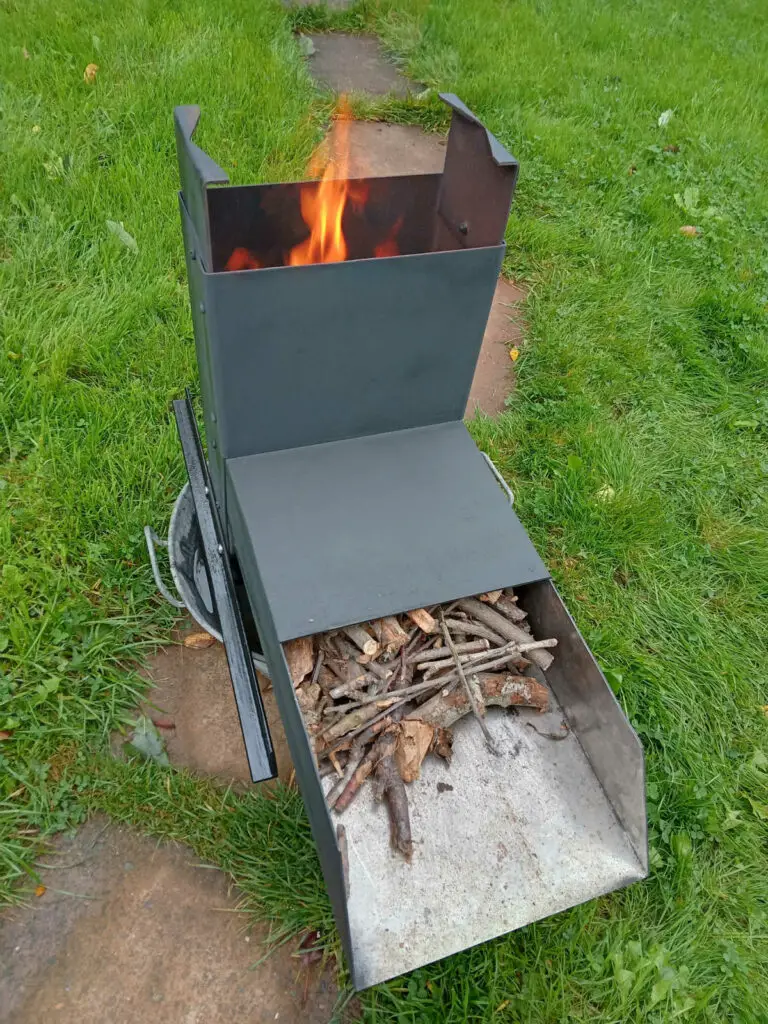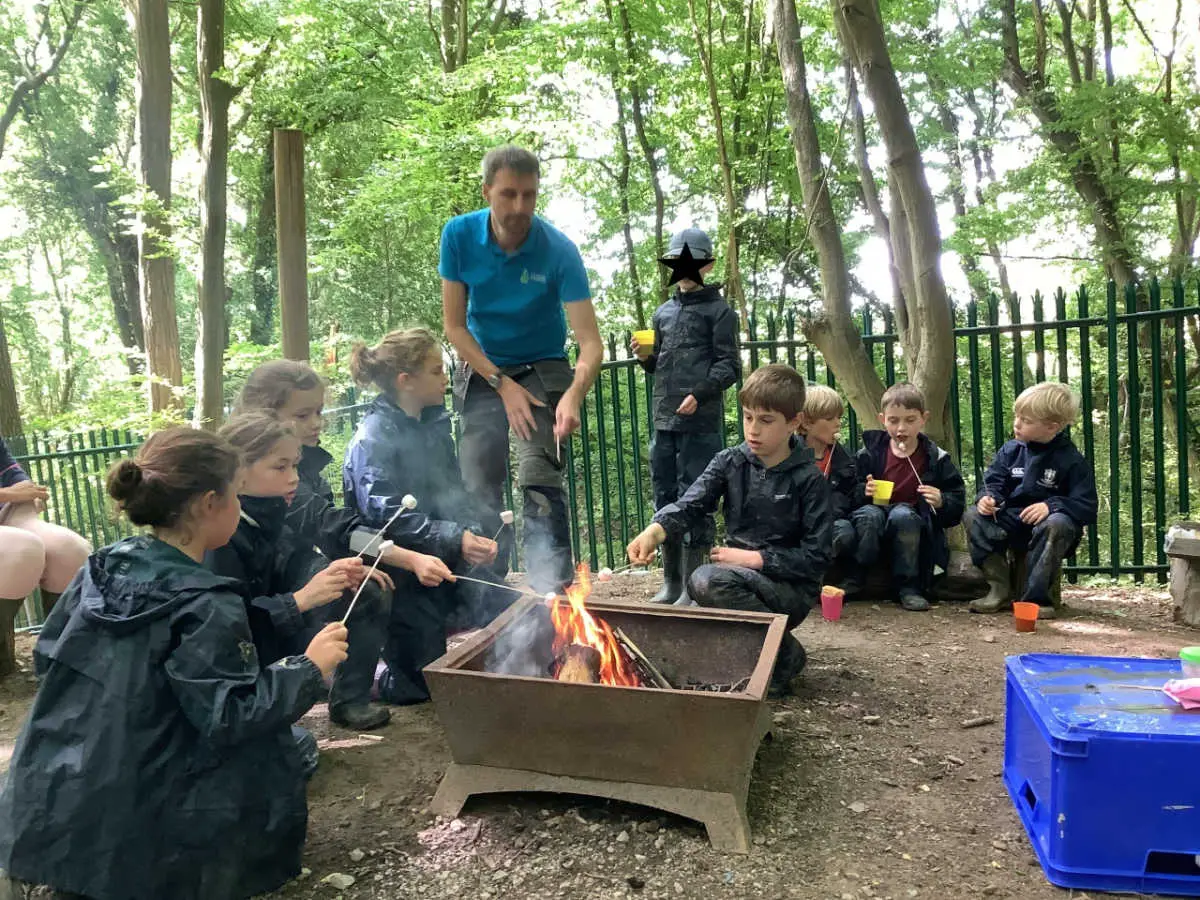Tips From Forest School Leaders
This blog is reader-supported. When you purchase something through an affiliate link on this site, we may earn some coffee money. Thanks! Learn more.
A while back, I asked our wonderful community whether they had any personal stories of their journeys as forest school leaders and tips to share with others about the role.
A number of leaders got in touch to share their experiences. Here’s what they had to say.
Embrace the learner-led aspects
The best thing about my role is providing something different and extra to our students and seeing how they thrive outside the classroom.
I’m new to the role of forest school leader (still completing the coursework so I probably can’t actually claim the title yet!). I am a Science Technician and part-time Alternative Provision LSA in a secondary school, and we wanted to increase the enrichment and alternative provision opportunities on site.
After we’d sorted getting chickens and goats, I began my Forest School Leader training in 2021 and started 2 hour long weekly forest school sessions for small groups of students in September 2022.
My biggest tip, from personal reflection, is to really embrace the learner-led aspect of forest school.
This was difficult to get used to at first – having an array of crafts to choose from and not one student wanting to do any crafts was tough to accept, especially considering our school setting.
True choice and freedom is powerful – give that to your learners.
I’ve never been a ‘networker’ but reaching out to local forest schools has been invaluable to me. Forest school settings are so unique – each and every site and person involved will have something to teach you.
I have volunteered at a few local Forest Schools – I would be stuck without the mentor I have found, simply by sending a few e-mails.
~ Hazel
Don’t doubt yourself
I trained as a forest school leader at the start of the pandemic and qualified February this year.
I have worked in residential child care for over 22 years, primarily as a manager. The company offered me the post as each of our homes have a school attached and we were identifying children who were not thriving in the classroom.
The best thing about my role is definitely seeing the children benefit from being in the woodland and seeing their confidence grow over time as they soak up the experience of forest school and all it brings.
If there is a tip I’d give people embarking on taking up the forest school journey I’d say, fight against self-doubt, breath through the training and give yourself time to evolve. Every trainer will have a different approach but will be working towards a shared goal.
A forest school leader never stops learning as all children learn differently and the woodland has a vast endless supply of resources to discover.
~ Richard
Showcase your skills to the children
I got started in forest schools when I first started to work at a school supporting someone else, 16 years ago.
I thought, “I can do this.”
The best thing about my role is being able to spend time outdoors showing children all the things nature has to offer and what I did at their age.
Advice: go for it! You will never be disappointed and be able to showcase skills that are valuable for the children.
Forest schools is one of, if not the best way, to teach children about what nature has to offer: foods, materials to build and mostly the feeling of being one with the earth.
~ Neil
Remember your passion for connecting with nature
Retirement was a new beginning and I founded Coyote Nature School immediately afterwards in 2022 with two beautiful sites for young people to explore. I love the fluid nature of my role and the ‘always learning’ theme that runs through each day.
I worked in outdoor education every summer to start my career. Once in the role as a classroom teacher, I realized that I could bring this background as an extra gift to my students. After reading Richard Louv’s book inviting us to bring nature back into children’s lives, I was hooked.
I created Little Falls Forest School within my public school system and the adventure began.
Keep your passion for nature connection at the forefront. Don’t get lost in paperwork and purchased materials, focus on your site and what can be envisioned for the kids within it.
Let nature be your guide and keep your footprint light.
~ Kendra
Be prepared with the right gear
I have been passionate about child development for over forty years! In those years I have worked in every sort of setting, and these years in an outdoor classroom setting, immersed in nature, have been deeply satisfying.
We have always thought of ourselves as a nature-based school but when the pandemic hit, we wanted to stay open which we accomplished by making three separate outdoor classrooms.
The environment that our school is surrounded by: woods, fields, garden beds along with the smell of the ocean a mile a way created a backdrop that called to the educators at the school to move fully into being outdoors. Our space had enough room to create shelters (adult made and child built too), trail systems, mud kitchens, and community gathering places with stump seating and stump tables.
I have always had a respect, wonder and love for the outdoors. I thrive on creating opportunities for children in all seasons to love playing outside, therefore it has been an easy task!
We love seeing the growth and expansion that takes place within a short amount of time for children, and also their families. We find that many families keep the outdoor theme going in their off-school hours, even more than they did before coming to Appletree.
We hear that this is often driven by the contagious energy that comes along with children’s comfort and willingness to be outside as much as possible.
The feedback from parents is always valuable and fulfilling, to hear them describe conversations with their children at home that involve what they have explored, built and discovered during their days in the natural classroom.
When you are approaching a role as an outdoor teacher, being prepared with proper gear for staff and kids is essential!
You have to be willing to adapt to being outside everyday with the weather constantly changing. We use the word “flexible” quite a lot, as the continual changes of weather and ground conditions often lead to the need to assess our plan, to switch things up and simply be flexible with the day’s experiences.
But, definitely get good socks, boots and outer gear!
It is interesting to observe how the kids interact with each other outside in comparison to being inside most of the day, and we think that the outdoor environment affects them differently in many aspects.
When their environment is continually changing it expands their scope of interest, exploration and discovery, as well as having a positive impact on their social-emotional development.
~ Carrie Croft – Director, Appletree School, Cape Elizabeth, Maine, USA
Get creative with fire
We became involved with outdoor learning in a rather unusual, roundabout way. Having developed a stove to make biochar which could be used in water filters in western Kenya, we realized (during lockdown) that the Tawi would be an exciting tool for harnessing and exploring the power of fire. ‘Tawi’ means small sticks or twigs in Swahili.
All organic matter is carbon-based. Using a Tawi stove enables you to turn theory into practice by making your own charcoal crayons or using pyrolysis to turn a pine cone into its carbon form!
Our role as ongoing supporters of Forest Tawi owners allows us to share our expertise by engaging with Tawi users personally, so that their interaction with outdoor learners promotes exciting understanding of HOW pyrolysis occurs.
You can use a Tawi stove to demonstrate how the buzz phrase ‘Carbon Capture’ relates to the Carbon cycle and climate change, which is important national curriculum science.

As the Forest Tawi is a clean-burning stove, once fully alight, we know it can be used safely in urban situations where the use of conventional open fires and BBQs might be restricted.
The biochar (porous charcoal) which is made in the Tawi is a fascinating by-product of cooking and learning with fire, and can be used in composting, for deodorising and for water filtering experiments. Forest Tawi users can also choose to learn how to turn their biochar into sustainable charcoal briquettes, which can then be used in the Tawi fire-trough to barbeque in a traditional way over a griddle!
Fire is fundamental to human history and survival. It is also an integral part of outdoor learning, so we genuinely believe the ability to study fire with a Forest Tawi offers exciting, unique possibilities for creative learning and skills development.
~ Catharine Boyd-Moss, Carbon Farmers
Find the educational philosophy that resonates with you
My journey into outdoor learning and forest school began over four years ago when I noticed a growing disconnect between children and nature. As someone passionate about the outdoors and inspired by the Waldorf education philosophy, I wanted to create a space where children could connect with nature through hands-on experiences. This led me to start Creative Roots Outdoor Learning, where I integrate Waldorf pedagogy into the session.
The best part of my role is witnessing how nature and creativity combined can spark a child’s imagination and growth. I love seeing how the Waldorf seasonal crafts and storytelling I bring to our sessions deepen the children’s connection to nature and the rhythm of the seasons. Watching them immerse themselves in a story or proudly craft something with their own hands is incredibly fulfilling. It’s wonderful to see how these activities not only nurture their creativity but also help them develop a strong sense of wonder and respect for the natural world.
My biggest tip is to cultivate a deep respect and understanding of both nature and the educational philosophies that resonate with you. Whether it’s Waldorf, Montessori, or another approach, integrating these philosophies can enrich your outdoor learning program. Continuous learning and adaptability are key—nature is unpredictable, and so are the needs of the children you work with. Also, be patient and open to learning from the children; they often have a unique perspective that can teach you just as much as you teach them.
I would encourage anyone interested in outdoor learning to dive in with enthusiasm and an open heart. The rewards of working in this field are immense, both for the children and for your own personal growth. It’s a role that challenges you to think creatively, adapt continuously, and develop a profound appreciation for the natural world. Most importantly, it’s about creating a space where children feel free to explore, learn, and grow in ways that are not always possible in traditional educational settings.
Dominika at Creative Roots

About the author: Elizabeth Borley
Elizabeth is our forest school administrator, responsible for running the website and managing bookings for afterschool clubs. She is a member of the Forest Childcare Association and loves walking in the woods and places with a view. As a parent, she understands the value of children spending time outdoors.
